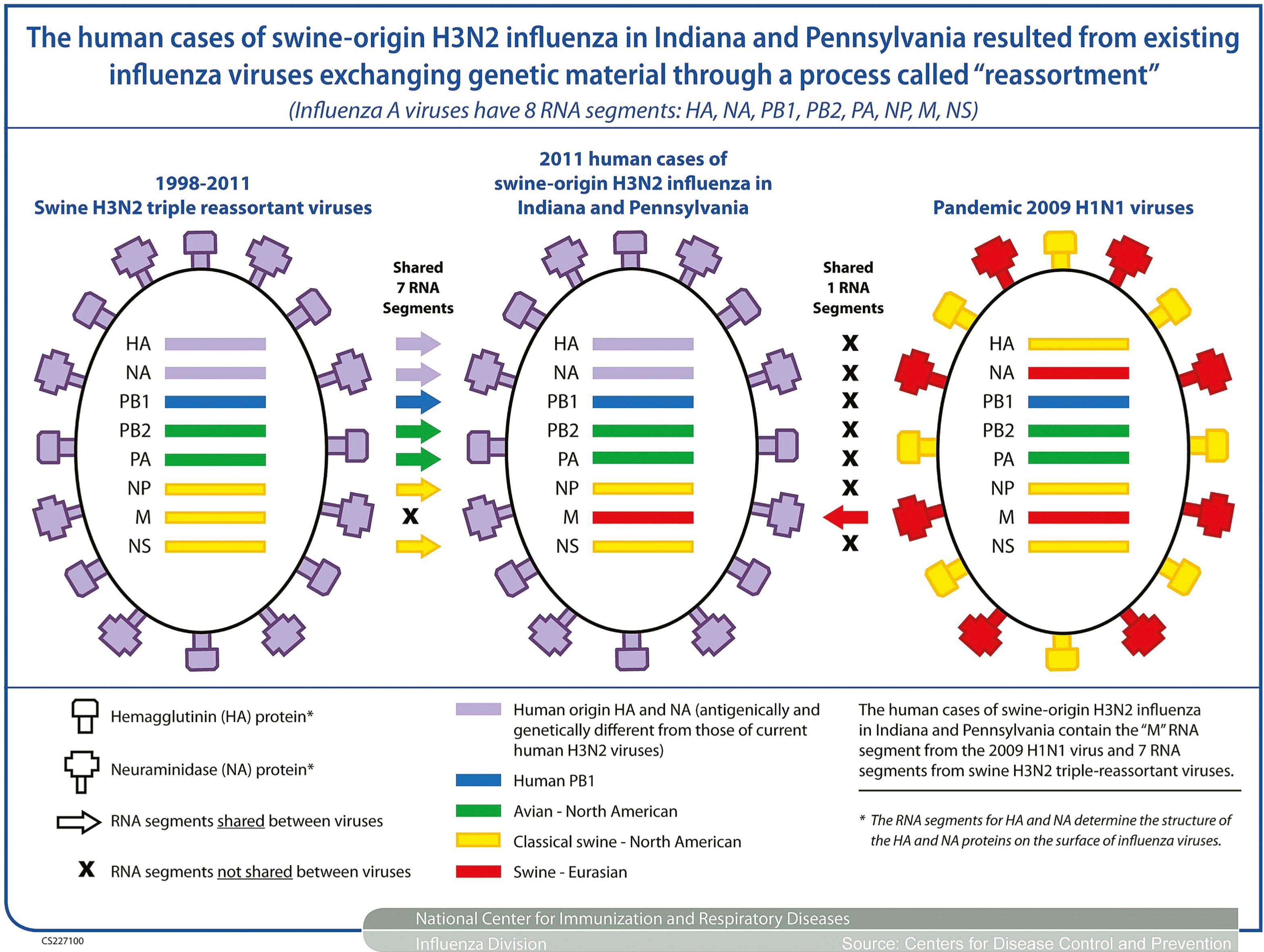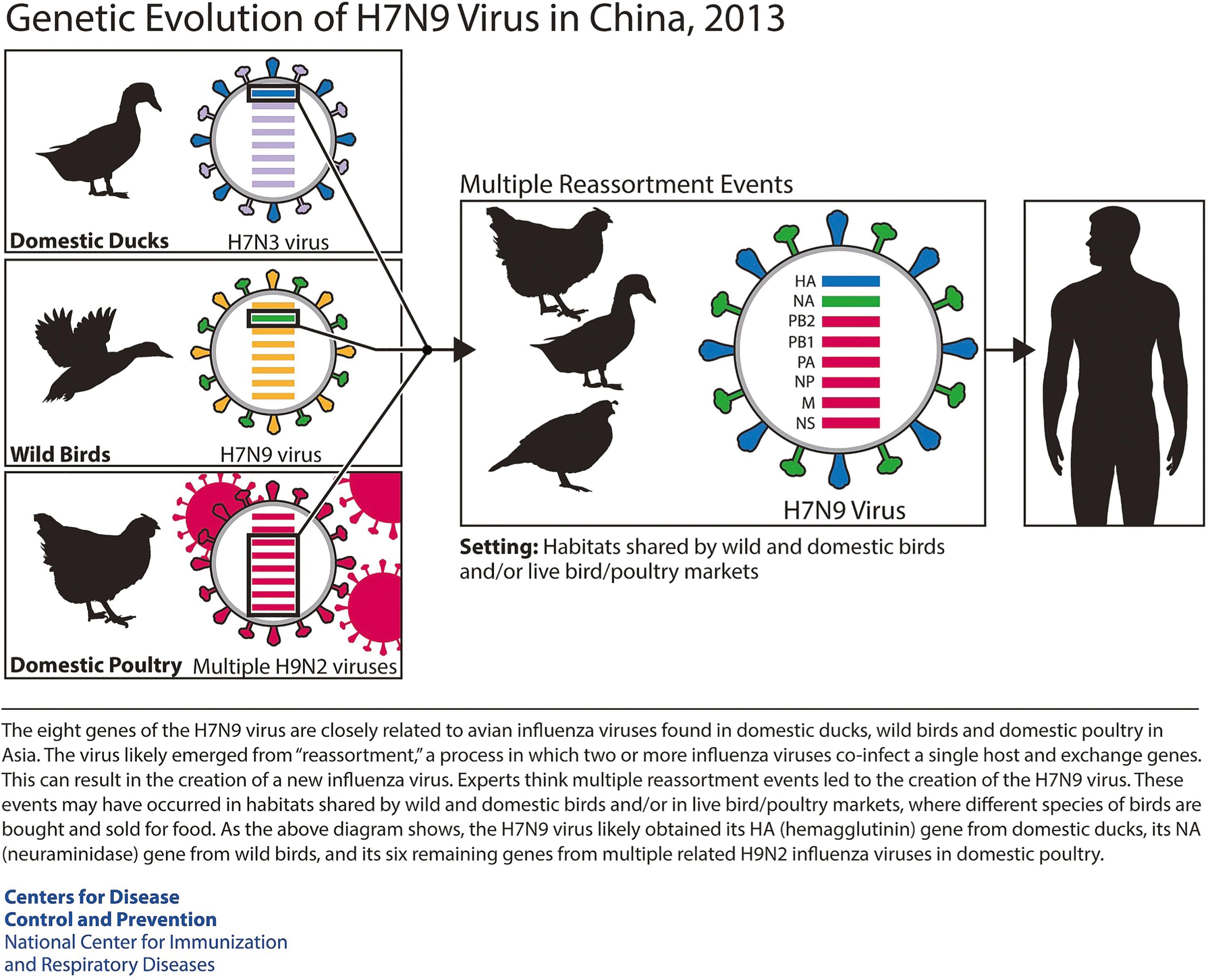Physical Address
304 North Cardinal St.
Dorchester Center, MA 02124
Influenza is a disease that represents an important public health concern. The ability of influenza viruses to undergo genetic mutations and become the cause of global epidemics (pandemics) has been a constant worry to public health experts. Over the past century, four influenza pandemics (Spanish flu, 1918; Asian flu, 1957; Hong Kong flu, 1968; swine flu, 2009) have occurred. The 1918 pandemic was the most severe, when an estimated 50 million people died from the flu worldwide. The most recent pandemic occurred in 2009 to 2010, with the H1N1 influenza virus. The US Centers for Disease Control and Prevention (CDC) estimated that between 151,700 and 575,400 people died from this virus during the first year of the pandemic worldwide. Recently additional concerns have arisen to public health and bioterrorism officials regarding the use of influenza virus as a bioweapon. Advancements in biotechnology have allowed common microbes such as influenza virus to be genetically engineered to cause more severe symptoms, become resistant to current treatment modalities, and/or be crafted to mimic previous pandemics. Influenza virus has the ability to cause future devastating pandemics with significant public health impacts. We have learned from previous influenza pandemics and the recent COVID-19 pandemic that an efficient global preparedness plan to fight against large-scale outbreaks or pandemics is a necessity and requires national and international collaboration between public health agencies throughout the world.
Influenza viruses circulate among human populations worldwide, with yearly seasonal and geographic variations. The viruses that circulate among human populations are influenza A (H1N1and H3N2) and B (Yamagata and Victoria) viruses. However, occasional infection and global spread in human populations occurs with avian and swine influenza viruses, including the highly pathogenic avian influenza A (H5N1and H7N9) and the swine influenza A (H1N1, H1N2, and H3N2). Prior to the isolation and identification of the influenza virus, influenza pandemics were recognized by cases of the characteristic febrile respiratory syndrome comprising fever, chills, myalgia, malaise, headache, and upper respiratory symptoms such as rhinorrhea, cough, and pharyngitis that spread rapidly among human populations across geographic regions and countries. Global influenza surveillance reports indicate that human cases of influenza occur throughout the year. However, seasonal influenza epidemics peak mostly during the winter months in temperate areas of both hemispheres and during the rainy season in the tropics. Seasonal influenza occurs throughout the United States and its territories.
It has been observed that pandemics occur when an animal influenza strain acquires the ability to cause human infection. An influenza virus strain can be circulating in animal species (birds or pigs) for years before it acquires the genetic capability to infect humans and subsequently cause sustained chains of human-to-human transmission. Transformation of an animal influenza strain into one capable of infecting humans may occur through either genetic reassortment or genetic mutations. Genetic reassortment is a process by which genes from animal and human influenza strains mix together to create a novel human-animal influenza reassortant (the result of the reassortment) virus (genetic shift) ( Figs. 97.1 and 97.2 ). The novel reassortant virus may be capable of infecting humans, spreading rapidly, and causing severe infection; thus it would have the potential to cause a global epidemic (pandemic). Genetic mutations in animal or human influenza viruses are usually small cumulative changes in genes occurring continuously during viral replication that may result in significant alteration of viral surface antigens; occasionally mutations may occur that allow an animal virus to infect humans and transmit easily among them. The presence of a new (novel) influenza strain initially presents as small clusters of human infections that spread locally and then globally. Humans usually do not have any immunity against the new strain, so it can cause severe symptoms and spread worldwide, causing a pandemic with significant effects on human health. The primary risk factor for animal-to-human transmission is direct exposure to infected animals. The primary measure to prevent spread of these infections to humans is the control of influenza infections among animal and bird populations.


Many public health authorities question if there could be any predictive model for forecasting such outbreaks, but the answer is not yet fully known. The risk of such an outbreak with potential to cause a pandemic is multifactorial, depending on the extent of human-to-animal exposure in different populations, degree of influenza virus infection and gene reassortment in the animals, personal and social hygiene among individuals caring for or butchering animals, preexisting immunity in the human population exposed to the new virus, local and country-level long-term commitment to coordination between human and animal health authorities to control infections in animals, and successful implementation of an influenza pandemic preparedness plan. It is obvious that primary evidence of animal-to-human transmission is alarming and that sustained human-to-human transmission is the point at which regional, national, and international public health measures should be implemented to prevent the development of a pandemic.
Become a Clinical Tree membership for Full access and enjoy Unlimited articles
If you are a member. Log in here